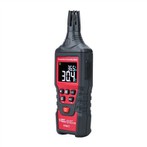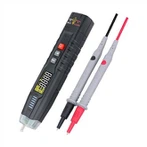Principles of Non-Destructive Testing Methods for Coating Thickness Gauges
Non destructive testing technology is a discipline with strong theoretical comprehensiveness and great emphasis on practical aspects, which has great potential for development. It involves many aspects such as the physical properties of materials, product design, manufacturing processes, fracture mechanics, and finite element calculations.
In industries such as chemical, electronic, power, and metal, in order to achieve protective or decorative effects on various materials, methods such as spraying non-ferrous metal coatings and phosphating, anodizing, etc. are usually used. This has led to the emergence of concepts such as coatings, plating layers, coatings, stickers, or chemically generated films, which we call "coatings".
The measurement of coating thickness has become the most important process necessary for users in the metal processing industry to conduct quality inspection of finished products. It is an essential means for products to meet * * standards. At present, the thickness of coating layers is generally measured according to unified international standards both domestically and internationally. The selection of non-destructive testing methods and instruments for coating layers has become increasingly crucial with the gradual progress of material physical property research.
Regarding non-destructive testing methods for coatings, there are mainly wedge cutting method, light cutting method, electrolysis method, thickness difference measurement method, weighing method, X-ray fluorescence method, beta ray reflection method, capacitance method, magnetic measurement method, and eddy current measurement method. Except for the last five methods, most of these methods require damage to the product or its surface, which is a form of damage detection. The measurement methods are cumbersome and slow, and are mostly suitable for sampling inspection.
The X-ray and beta ray reflection methods can be used for non-contact and non-destructive measurement, but the equipment is complex and expensive, and the measurement range is small. Due to the presence of radioactive sources, users must comply with radiation protection regulations, which are generally used for thickness measurement of various metal coatings.
The capacitance method is generally only applied in testing the insulation coating thickness of very thin conductors.
With the continuous advancement of technology, especially the introduction of microprocessor technology in recent years, magnetic measurement method and eddy current measurement method have taken a big step towards miniaturization, intelligence, multifunctionality, high precision, and practicality of thickness gauges. The measurement resolution has reached 0.1 μ m, and the accuracy can reach 1%. It also has the characteristics of wide applicability, wide range, easy operation, and low cost. It is an instrument widely used in industry and scientific research. Ultrasonic level gauge, ultrasonic liquid level gauge, ultrasonic thickness gauge.
The use of non-destructive testing methods for thickness measurement does not damage the coating or substrate, and has a fast detection speed, which enables a large amount of testing work to be carried out economically. Gaotian Experimental Equipment Co., Ltd. will introduce several conventional methods for thickness measurement.





